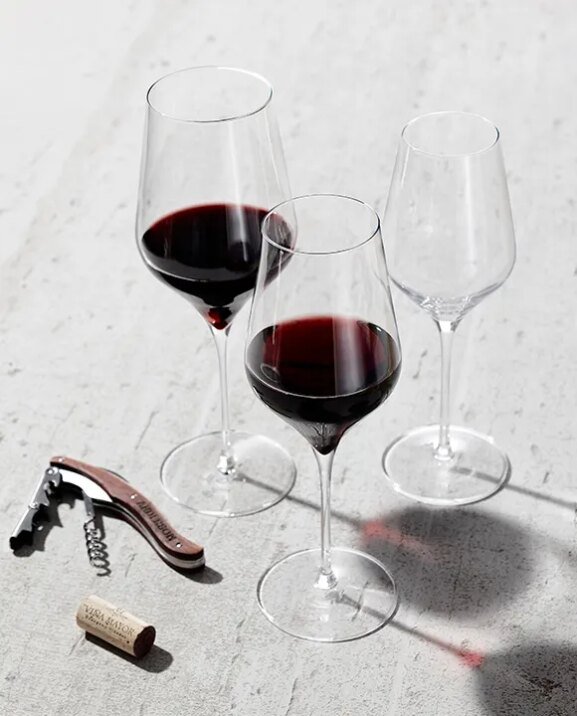New York City’s Urban Wineries
The city that never sleeps has long been an epicenter of wine imbibing. Its association with winemaking, however, is less obvious. More pastoral regions like the Finger Lakes, Long Island and Hudson Valley have earned New York a ranking of third-largest wine-producing state in the U.S. But apart from being a major customer base for these wine-growing regions, the City itself has played a part in America’s winemaking history, dating back to its earliest days.
Despite failed attempts in the 17th century at planting European vines in what is today Manhattan’s Bowery neighborhood, by 1800, Flushing, Queens became—and remained for more than seven decades—the site of America’s most important nursery. The Prince Family Nurseries introduced more than 200 grape varieties to America and standardized the name and use of established varieties, a legacy that lives on today.
You May Also Like: The Best Long Island Wineries to Visit Right Now
In the Shop
For Wine On-the-Go
This versatile messenger-style wine bag comes with removable bottle liners, a corkscrew and an aerator.
“For the entire 19th century, the City of New York hosted at least a dozen horticulturalists of national stature who founded botanic gardens that specialized in grape culture and the making of wine,” says J. Stephen Casscles, grape historian and author of Grapes of the Hudson Valley. “These NYC-based horticulturalists disseminated hundreds of different wine grape varieties to budding viticulturists around the nation and taught them how to grow grapes and make wine.”
Fast forward to the late 19th century when a significant jump in Italian and Jewish immigration brought new wine traditions to NYC and wine was made in tenements and back gardens. Manischewitz, the famed (or infamous) sweet kosher wine, was made in Brooklyn from 1939 until the mid-1980s.

And the past two decades have ushered in a modern iteration of city winemaking, one that includes a dollop of wine tourism: the urban winery.
City Winery, which began on Chelsea Pier in Manhattan’s Meatpacking district in 2008 and has expanded to 13 venues in nine American cities, combines music, food and wine for immersive experiences that afford city dwellers the chance to taste beside shiny steel tanks of fermenting grape juice without ever having to leave NY’s concrete confines. Similarly, Brooklyn Winery, founded in 2010 in Williamsburg, offers tastings, tours and upscale comfort food in its recently expanded wine bar. Both establishments source grapes from both East and West Coast wine regions as well as Argentina (in City Winery’s case).
Other urban wineries are more locally focused. Red Hook Winery, also founded in 2008, works only with grapes grown within New York State. Perched at the edge of Pier 41, with dramatic views of the Statue of Liberty, its exposed location earned it the unfortunate distinction of being the only winery in the state to withstand extreme damage from Hurricane Sandy in 2012. It rebuilt bigger and better, and today Red Hook offers tastings and a retail shop within its industrial brick-and-steel complex. As if its location weren’t unique enough, the winery boasts not one but three highly experienced (if, stylistically, polar opposite) winemakers— Christopher Nicolson with California stalwarts Abe Schoener and Bob Foley—who craft a dizzying array of individually made regional and site-specific wines.

There’s one urban winery that takes the locavore concept a step further. In 2016, Rooftop Reds became NYC’s first winery to grow its own grapes on—you guessed it—the rooftop of an industrial complex within the Brooklyn Navy Yard. The “heat island effect” experienced on the 14,800-square-foot roof makes it the warmest vineyard in New York State, allowing Bordeaux varieties like Cabernet Sauvignon and Merlot to ripen easily. To founder Devin Shomaker, planting vines on a rooftop in Brooklyn was a no-brainer.
You May Also Like: Searching for the Soul of the NYC Bar
“Why should we not explore new areas to propagate grapevines, especially when woody perennials (aka grapevines) carbon sequester so brilliantly, and the maritime climate of NYC allows for a wonderful growing season?” he asks.
Rooftop Reds is open to visitors in the warmer months, between April and October. Guests to the roof can sip the fermented juice of grapes grown on vines just beside their tables and hammocks— along with wine from Rooftop’s Finger Lakes partner winery, Point of the Bluff—while gazing past the vines at a cityscape of skyscrapers and whizzing trains.
This article originally appeared in the May 2024 of Wine Enthusiast magazine. Click here to subscribe today!

Bring the World of Wine to Your Doorstep
Subscribe to Wine Enthusiast Magazine now and get 1 year for $70 $29.99.
Published: May 3, 2024
Like what you’re reading? Learn more about:

